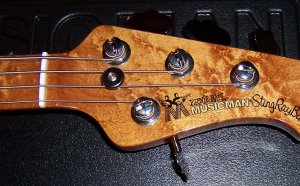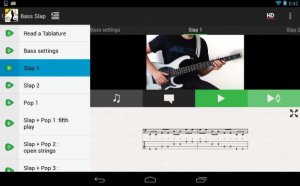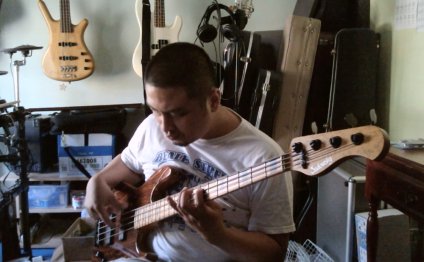
Fretless Bass Lessons
Chops:Intermediate
Theory: Beginner
Lesson Overview:
• Understand the fundamental skills needed to play fretless bass.
• Develop exercises to improve intonation and articulation.
• Learn how fretless and fretted basses treat effects differently.
After hearing the late, great Jaco Pastorious, I decided to develop my fretless skills. I knew I had to get a fret- less in my hands because there had to be something within that instrument that Jaco needed that wasn’t accessible in a fretted bass. I was determined to find what this fretless sound was all about.
Since meeting my bass teacher, Steve Evans, in the early ’80s, I had known about his stock 1970 Fender fretless P bass. He lent it to me a few times, and I knew right away I wanted it. The instrument seemed to enhance itself. I would let a note sustain and then move my finger very slightly. All of a sudden, these nuances I wasn’t hearing in fretted instruments rang out. I could envision more music with this bass than any other bass I had owned. Fifteen years ago, I decided to borrow it one last time with the intention of never giving it back. Steve laughed and said I would probably play fretless bass better than he did.
After a proper setup from Eric’s Guitar Shop for my new acquisition, I decided first to make sure I had good intonation. A friend of mine had taken upright bass lessons and he mentioned that his instructor would have him check the intonation of fingered notes against an open string. I took that advice and would check the open strings against their respective notes as I fingered them. For example, I’d play an E on the third string and check it with the open fourth string. Then, I moved that idea around to major thirds, fifths and then all the rest of the intervals. I can’t tell you how fast my intonation came together. I would have to say within months, I could stay in tune with the open string notes and also in band situations.
The next step for me was to work on articulation. Jaco made his mark here and, in my opinion, it made him one of the most expressive bassists of all time. This is the key to becoming a musical fretless bassist. The way you slide into notes, the way you place vibrato on a note, and the finger pressure you apply to the string against the fretboard all contribute to your articulation and sound. Sometimes I want a fast vibrato to get me that classical cellist sound, or I want to apply hard pressure on the string to give the note more of a “point.” Other times, I want to slide up or down into a note. That makes the string resonate in a unique way that only comes from sliding. All of these ideas come primarily from your left hand and they tax your hand muscles differently than in fretted bass. It sure can be a workout, so make sure to warm up!
The right hand works basically the same way as far as position placement on the bass. If you are placing your hand up on the neck, you will receive a more upright, full sound. Moving your hand close to the bridge will get a sharper, midrange articulation. The difference here between fretted and fretless comes from how the two hands manipulate the sound together. I like to play near the bridge to make bass harmonic slides pop or to make fast runs stand out. I like to play close to the neck to get the fretless to sound like an upright bass or make it sound like a dub bassist would. There’s a tonal variety, I believe, that’s available exclusively to the fretless. It is, in my opinion, a more expressive approach to bass playing.
After focusing my efforts on an unaffected fretless sound, a thought came to mind. If there were so many more tonal varieties on a fretless, what would all that diversity of sound and tone create with effects? I soon found that, in terms of the assortment of sounds, nothing compares to a fretless instrument driving effects. Pedals and rackmount units gain a new life because of the variety of tones the fretless generates. Envelope filters work with so much more tone than on a fretted bass. Fuzz boxes sustain differently and seemingly longer, wherever you play along the neck. When you combine a synth pedal along with sliding into a note it can sound like the wheel-bending effect on a Minimoog. The fretless bass seems to send a different harmonic message when you use a vibrato or chorus pedal. It gives them a richer and fuller audio signal. Ring modulators seem to really take off and go in multiple directions that fretted basses just can’t compare to.My fretless manifesto is my homage to one of my musical heroes. I knew Jaco was on to something very unique and I was compelled to follow him and see if I could offer a musical point of view that hadn’t been fully investigated. I feel my fretless bass is my voice and I want to continue to develop sounds that represent the past and the future. My history and my destiny lie within my fretless bass.
YOU MIGHT ALSO LIKE
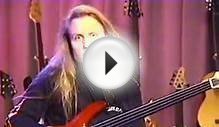

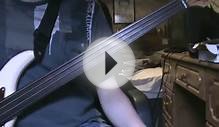
Share this Post
Related posts
Creative Bass Lessons
Creativity cannot be taught. No matter how many DVD’s tell you that it can, it can’t. There are no formulas, no rules, and…
Read MoreSlap Bass Lessons
Lesson description Slap bass is a cool technique that can set you apart from other bass players. Berklee College of Music…
Read More
